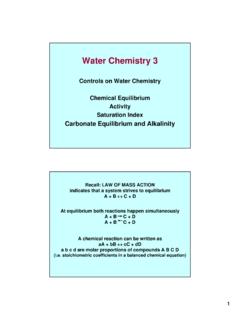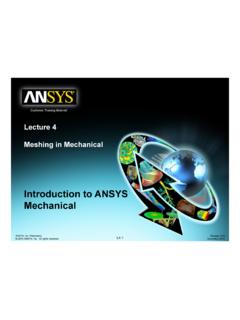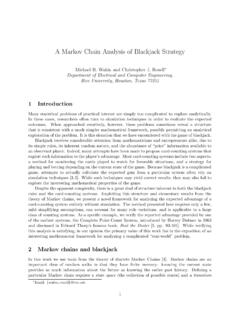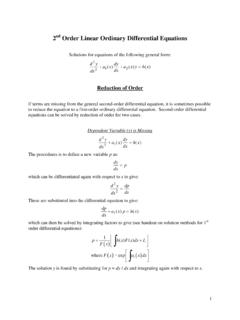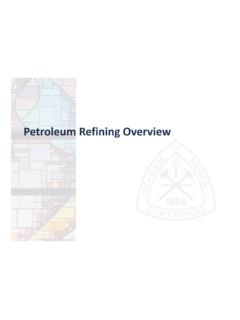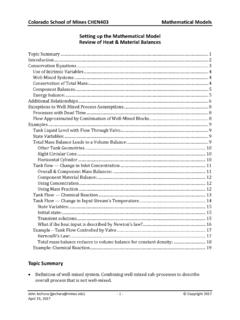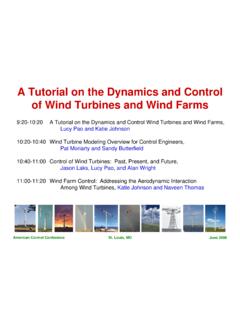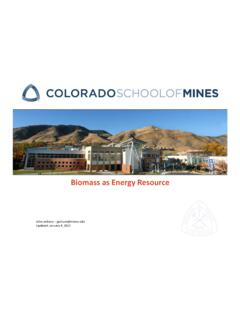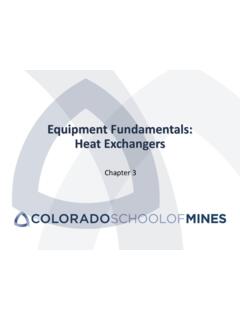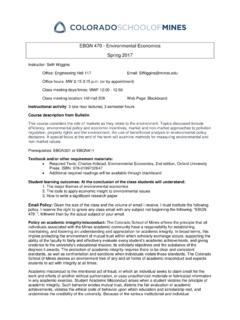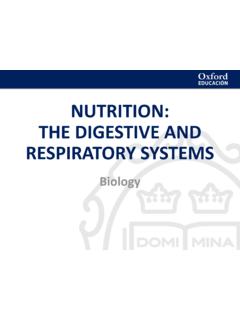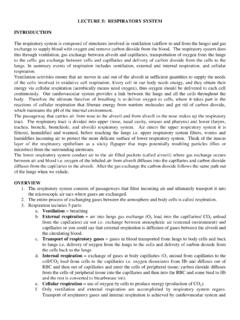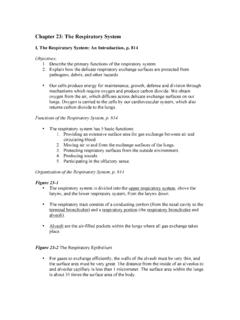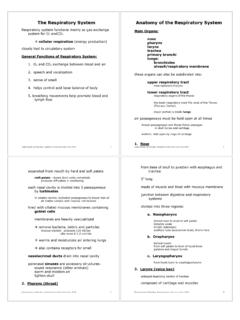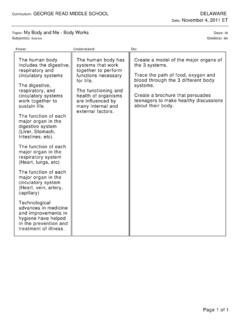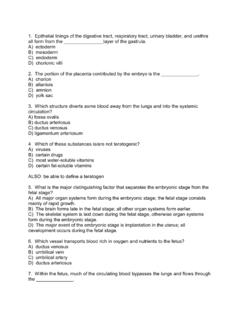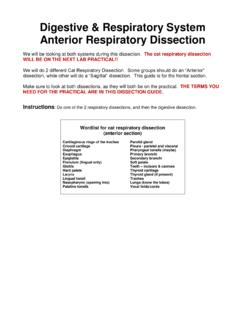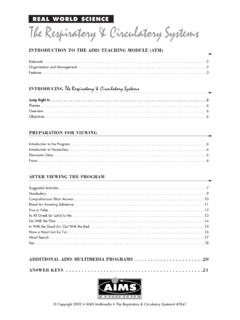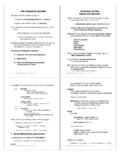Transcription of The Body Systems Lesson Plan - Inside Mines
1 The body Systems Lesson plan Science Standards Addressed (From the Colorado Department of Education) Standard 2-Life Science 7th Grade: Outcome 2: The human body is composed of atoms, molecules, cells, tissues, organs and organ Systems that have special functions and interactions. 5th Grade: Outcome 2: Human body Systems have basic structures, functions and needs. Reading, Writing, and Communicating Standards Addressed (From the Colorado Department of Education) Standard 3-Writing and Composition 6th Grade: Outcome 1: Writing informational and persuasive genres for intended audiences and purposes requires ideas, organization, and voice.
2 5th Grade: Outcome 3: The recursive writing process creates stronger informational and persuasive texts for a variety of audiences and purposes. 4th Grade: Outcome 3: Correct sentence formation, grammar, punctuation, capitalization and spelling are applied to make the meaning clear to the reader. Standard 4-Research and Reasoning 4th Grade: Outcome 1: Comprehending new information for research is a process undertaken with discipline both alone and within groups. Mathematics Standards Addressed (From the Colorado Department of Education) Standard 3-Data Analysis, Statistics, and Probability 6th Grade: Outcome 1: Objects in space and their parts and attributes can be measured and analyzed.
3 Standard 4-Shape, Dimension, and Geometric Relationships 7th Grade: Outcome 2: Linear measure, angle measure, area, and volume are fundamentally different and require different units of measure. Objective: Understand the how the different body Systems (skeletal/muscular, circulatory, respiratory , digestive , and nervous) work and how they are related to each other. Be able to create a plan to organize thoughts and write a descriptive and detailed paragraph for each system . Introduction First show students a simple machine (ie. a can opener) to show how the parts work together. Then talk about how the organs in your body work together in groups called system .
4 Have students read Magic School Bus Inside the Human body and identify the body system that work together: Ernie Endocrine Can Circulatory Never Nervous Remember respiratory digestive digestive system Skeletal / Muscular Have students form groups and then trance one person onto a piece of butcher paper. After covering a body system , students can add then draw that system onto the body . Skeletal/Muscular system Questions for students: Why do we have bones? Support us and protect our organs (like the rib cage and skull) What are bones made of? Calcium Activity: Show them the egg that was soaking in vinegar (best if soaked overnight).
5 Pass around to see how soft and rubbery it is now. Explain to them that the outside of the egg is made of calcium. Questions: What happen to the calcium? It dissolved. What happens when we don t get enough calcium? Where can we get more calcium? Show X-Ray of a broken bone. Ask students how can they protect their bones. Bones cannot move on their own. They need muscles to move. Show student picture of muscular system . Question for students: What do muscles help us do? Exercise. Explain that one way to understand exercise is to divide physical activities into 3 categories: strength (ability to lift, pull, or push), endurance (the ability to do something for a long time), and flexibility (ability to stretch and bend) Activities: Strength: Push ups Endurance: Run in place until tired.
6 Flexibility: V-sit Talk about what muscles are used to do these activities. Joints allow humans to bend, swivel, curl, pivot, and turn. Joints are points where two or more rigid bones are joined together by muscles. Pass around an example of a hinge joint (like one that a door uses), and a ball-and-socket joint. Have students discuss the range of motion of each joint. Have students move some of the major bones in there body , such as the tibia (shinbone), the femur (thighbone), humerus (upper arm bone) and the mandible (jawbone). Ask students which joint is used to move the bone. Have students describe motion of the joint (up and down, around in a circle, etc.)
7 And identify the kind of joint being used. Have students read about the skeletal/muscular system . Have students use a circle maps write down what they learned about the skeletal/muscular system . Then have them write a paragraph about the skeletal/muscular system . Have student draw on the body a few bones (ie. rib cage, femur, etc.) Circulatory system Question: What is the largest muscle in the body ? Heart, What does the heart do? Pumps blood around the body . Pump oxygen from the lungs to body parts that need it. After the body parts use the oxygen, it releasCarries carbon dioxide to the Where does the blood go?
8 Everywhere! Activity: Find resting pulse. On neck find pulse, count beats in 10 seconds, multiply by 6. Then do an exercise (ie. jumping jacks or running in place) for 1 minute and then find pulse again. Questions: Why Muscles need more oxygen, so more blood has to be pump to them. Alternative Activity: Stick a toothpick in a dime sized lump of clay. Place the piece of clay on the Inside of their wrist. Count how many times the toothpick moves. Exercise. Count how many times the toothpick moves. Activity: Assign students into heart , lungs , blood , and body parts groups. Have blood students start at the heart and move the lungs.
9 Lung students will hand blood students a card that says oxygen. Blood students return to the heart , which pumps the blood to body parts . Blood students will move to body parts . body part students can be a certain body parts, like leg muscle or brain, and act out a motion (like kick) when they receive oxygen. Then the body parts students give the blood students carbon dioxide cards. Then blood students move back to the heart , which then pumps the blood to the lungs . At the lungs , blood students swap carbon dioxide cards for oxygen and then return the heart , where the process repeats.
10 Have students read about the circulatory system . Have students use a circle maps write down what they learned about the circulatory system . Then have them write a paragraph about the circulatory system . Have students draw a heart on the body with some arteries and veins. respiratory system Question: How do we get the oxygen we need? By breathing, what organ do we use? Lungs. Lungs trade carbon dioxide with blood for oxygen, hence, why we breathe out carbon dioxide. We breathe in oxygen through our mouth, which passes through the trachea (windpipe) into our lungs. The lungs swap oxygen for carbon dioxide. The diaphragm is a muscle that helps push out the lungs when they are filling up with air.
